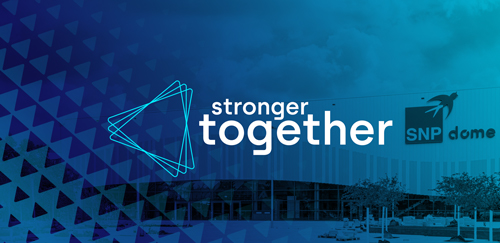Seven key challenges of SAP ERP system separation
Separating IT systems during organizational changes or to manage operational risks can offer significant benefits, but SAP ERP’s complexity makes it challenging. This blog covers key considerations for carving out SAP ERP systems.
Your contact

Ibrahim Kanalici
M&A Solutions Leader at SNP EMEA
Share
Overcoming the challenges and identifying critical success factors
When it comes to carve-outs, the stakes are high. Separating SAP ERP systems is a complex process that, if not managed properly, can lead to data inconsistencies, operational disruptions, compliance risks, and unexpected costs. SAP ERP systems are deeply embedded across core business functions, making their separation particularly challenging. In this blog post, we’ll examine the key hurdles of SAP ERP carve-outs and outline critical factors for a smooth and efficient transition.
1. Complexity and integration
SAP ERP systems are highly interconnected, supporting multiple functions such as finance, supply chain, and human resources. Carving out a portion of an SAP landscape without disrupting operations requires careful planning, as different applications and modules often share data and workflows. Without a structured approach, companies risk breaking critical business processes, leading to inefficiencies and errors post-migration.
2. Data dependencies
Data within SAP systems is often interdependent across various modules. For example, financial data may be linked to supply chain data, and human resources data may be connected to payroll data. Ensuring data integrity and consistency while separating the systems is a significant challenge. It requires technical knowledge of these dependencies as well as practical knowledge to ensure the data remains accurate and reliable after the separation. Assessing data structures and dependencies early is essential to avoid costly post-migration corrections.
3. Customization and configuration
Many companies heavily customize their SAP systems to meet specific business needs. These customizations add another layer of complexity when trying to separate the systems. Each customization needs to be carefully evaluated to determine whether it should be replicated, modified, or discarded in the new system. This process can be time-consuming and requires a deep understanding of the customizations and their impact on business processes.
4. Business continuity
Ensuring business continuity during the carve-out process is critical. Any downtime or disruption can have significant operational and financial impacts. Companies must develop detailed plans to minimize downtime and make sure that critical business functions continue to operate smoothly during the separation. This may involve setting up temporary systems, conducting thorough testing, and having contingency plans in place. A well-planned migration leveraging the near-zero downtime approach can significantly reduce the transition time, limit downtime on both the source and target systems, and ensure a seamless transition with minimal business disruption.
5. Regulatory and compliance requirements
Compliance with regulatory requirements, such as data protection and privacy laws, adds another layer of complexity to the carve-out process. Companies must ensure that the separated systems meet all regulatory requirements, which may involve implementing new security measures, updating data handling procedures, and conducting audits to verify compliance. Failure to meet these requirements can result in legal and financial penalties. Close collaboration between IT, legal, and compliance teams is essential throughout the process.
6. Impact on resources
The process of carving out SAP ERP systems is resource-intensive, requiring significant time, effort, and expertise from both IT and business teams. It often involves collaboration between various departments, including IT, finance, human resources, and legal, to make sure that all aspects of the separation are addressed. Many organizations choose to engage specialized partners to streamline the process, mitigate risks, and reduce the workload on internal teams.
7. Testing and validation
Extensive testing and validation are required to ensure that the separated systems function correctly and meet business requirements. This involves rigorous testing of all business processes, data flows, and integrations to identify and resolve any issues before the systems go live. Companies must allocate sufficient time and resources for testing to guarantee a smooth transition and avoid disruptions to business operations. Automating testing and validation can accelerate the process and deliver a seamless cutover with minimal operational impact.
Early planning is essential for a successful carve-out
A successful carve-out or migration starts with early and thorough planning. Rushing into such projects without a clear understanding of the existing data landscape, system dependencies, and business requirements can lead to costly mistakes, delays, and operational disruptions. In M&A transactions, IT activities often consume a sizeable share of the overall budget due to the complexity of separating or integrating systems. Yet, inadequate planning remains a common pitfall.
The sooner stakeholders assess data structures, the migration scope, and regulatory requirements, the better positioned they are to mitigate risks, allocate resources efficiently, and ensure a smooth transition. Engaging IT teams at an early stage can significantly reduce friction, prevent unexpected challenges, and accelerate the migration process.
Specialized tools and expertise can make all the difference
Carving out SAP ERP systems is a complex, high-stakes process that requires expertise, automation, and strategic execution. Organizations that rely solely on internal teams often struggle with the scale, complexity, and speed required for a successful separation.
At SNP, we bring decades of experience, a network of trusted partners, and a proven track record with thousands of successful SAP transformations. Our Kyano platform and BLUEFIELD™ approach help automate and accelerate carve-outs, ensuring seamless execution while minimizing risk and downtime. Whether your organization is undergoing an M&A, divestiture, or restructuring, our solutions provide the speed, precision, and security needed for a successful SAP system separation.
Your contact

Ibrahim Kanalici
M&A Solutions Leader at SNP EMEA





